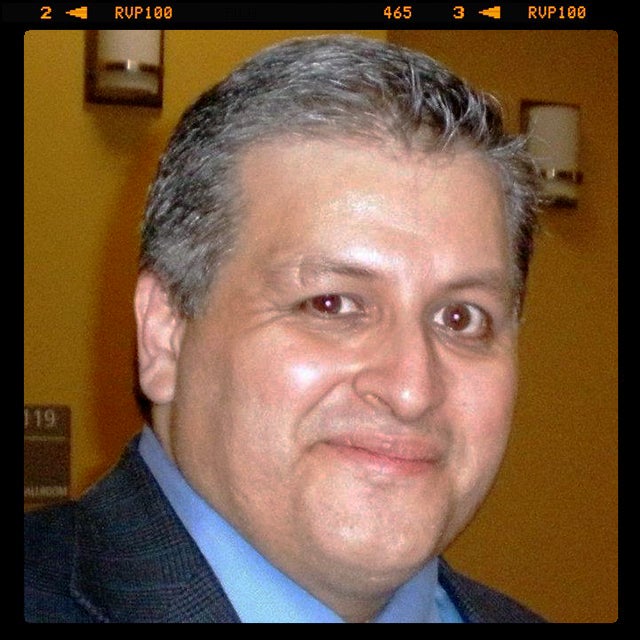

Francisco Salinas serves as Boise State University’s first Director for Student Diversity and Inclusion. The position was created at the request of students who were seeking to increase the love of influence and consistency associated with diversity efforts on campus, especially within the arena of student affairs. Francisco has been in this position since the fall semester of 2008. Previous to this role, he has served as the Director for Washington State University’s Student Support Services program (TRiO), the Director of Multicultural Affairs for the University of Idaho and the Director of Multicultural Student Services for both Skagit Valley College and Spokane Community College. He earned his Master’s Degree in Political Science from the University of Washington and his Bachelor’s degree in Political Science and American Ethnic Studies also from the University of Washington. He has taught courses in Chicano Studies, American Ethnic Groups, Career Development and Civic and Ethical Foundations. Francisco is one of the founding Co-Presidents for the Latino Chapter of the Boise State University alumni Association and is a board member for Radio Boise. He is also proud to hold the distinction of having been able to serve as the founding advisor for the state of Idaho’s first Latina founded sorority and Idaho’s first Latino founded fraternity. When he is not working, you can find him seeking out music or art related garage sale treasures or playing foosball.
There is a great song by a 1980’s post-punk band called Hüsker Dü. The song is called Crystal and it was the first song on their “Candy Apple Grey” album from 1986. The band was already legendary for their hardcore/punk cred, and this album was at the latter end of their evolution into something that foretold the burgeoning of “alternative” rock.
I discovered the band in high school during my own introduction to the wonderful world of punk. That particular song, however, held a deep lyrical meaning for me, as it seemed to identify a phenomenon that I was beginning to see more and more in the world around me. The primary metaphor in the song is the delicate display of crystal in a case, made specifically not to be disturbed, and “watched over” by the “G.I. Joe’s” (defensively – signaling some level of self-conscious insecurity). Nearing the end of my time as a high school student, many of my peers and I were, for the first time, beginning to really question the belief systems that we had been brought up in as we took deeper and deeper forays into our own independence and, in particular, independence of thought. Our crystal was rattling a bit, but it didn’t feel like any kind of threat.
As I headed to college, I was exposed to new ideas and new kinds of people, living on my own in a big city for the first time. The metaphor of closely guarded and delicately balanced systems of belief being challenged by a constant barrage of new information and experiences resonated with me. The message and emotion of that song seemed to capture perfectly a natural tension that I was seeing in many directions in the world around me. The central metaphor, however, also also acted as a not so subtle (thank you post-punk sensibilities) critique of the folly of treating one’s system of belief with the delicacy of zealously guarded crystal. What good, ultimately, are systems of belief that are too delicate to be able to stand up to being tested by the complexities of the real world and its messy experiences? I started to see this phenomenon over and over and began to recognize a kind of person whose system of belief seemed to be guarded against reality rather than tested and ready to stand up to it.
CRYSTAL ABOUNDS
What I had not considered until recently was that this same phenomenon could be something that we could experience on a broader scale; that maybe collectively there are groups, even large groups, which could be subject to such a phenomenon; that they would, as a group, almost subconsciously be defending a system with some level of similarly real or perceived fragility. As I have watched our modern era wrestle with questions about racial justice I have come to suspect that such a system is all too real and that it is fundamentally about the unaccounted for but deeply embedded systems built upon the myth of white racial and cultural superiority. To borrow the imagery of the song, to me it’s starting to look like those “G.I. Joe’s” are getting some itchy trigger fingers. As the floor of unquestioned cultural dominance begins to buckle and pitch, the complicated and interlocking shelves of a complex cultural system are creaking and strained. The crystal is shaking on these shelves and the rumblings don’t seem to be fading.
My time immersed in the cultural experience of being a man of color in the United States of America affords me a particular, but meaningful and earned perspective. What I know is that for the duration of my life, I have lived in an America in which racial justice and equality are, as yet, unfulfilled ambitions. I have a life filled with many blessings and I enjoy a level of privilege that I have worked for, but for which I am also thankful. A fundamental part of my motivation, however, is to work to help right some deeply embedded wrongs. The arc of my career in higher education happens to correspond with a fundamental shift in the nature of “diversity” work in higher education. When I was a student in the late 80’s and early 90’s, we still largely approached our work informed by a perspective that sought to create equity for traditionally under-represented student populations through addressing perceived or implied deficits in the students themselves. Structurally, we sought to equip these students simply to be successful within a system that remained largely unexamined. The work and the people doing it have evolved over time. Today we not only help these students navigate and define success within the existing system(s), we also seek to critically examine, expose the hidden biases within, and reconstruct that system itself. The movement used to be limited to getting us a seat at the table; now we want to have a voice in the creation of the menu. It is this fundamental reconciliation that gets the “GI Joe’s” trigger finger itching…can you hear that crystal beginning to rattle louder on the shelves?
CRYSTAL AND BEYOND…
My professional sphere, however, is only higher education. Although higher education clearly holds an influential role in the validation and transmission of dominant cultural values from one generation to the next, we are embedded within a larger and more complex reality. The criminal justice system and the very concept of “law and order” are framed squarely in the conversation advanced by activists across the nation in the “Black Lives Matter” movement and extend far beyond the walls of higher education’s ivory towers. The broader impact of this movement is a sweeping cultural critique of a profoundly flawed dominant culture that is experiencing a seismic level of critical societal renegotiation. It is not just one shelf in this case that is rattling, you see, it’s the floor that it’s standing on. One result of this seemingly escalating tension has been a highly emotionally charged retrenchment. You can see the “G.I. Joe’s” brandishing tiki torches and you can hear their ideological second cousins in bright red hats, aggressively longing for America’s regression into hazily defined places from a time before such critiques dared threaten to even imply that something other than unbiased meritocracy earned white-straight male America it’s seat at the head of the table. That part of America can see that there is something to lose in this new challenge. Those torchers and others know that what they stand to lose may be their long unquestioned and potentially unearned place of supremacy and control. What they seem to not-so-secretly fear is the delicacy of their crystal falling down in a monumental crash. What they can’t seem to steady their quivering fingers long enough to see is that if such crystal is so delicate, maybe it’s really better for all of us to build something much more sturdy and durable anew.